Cheese Named After an English Village: A Delicious History
Table of Contents
Introduction:
Cheese named after an English village has a long and interesting history. Many of the world’s favorite cheeses are named after the charming villages where they were first made. These cheeses are not only tasty but also tell the stories of the places they come from. In this blog post, we will explore the cheese named after an English village and learn about its origins and unique flavors.
People have been making cheese for many years, and in England, many cheeses are named after their local villages. These special cheeses are often handmade and reflect the culture and traditions of the people who live there. When you enjoy a cheese named after an English village, you are tasting a piece of history.
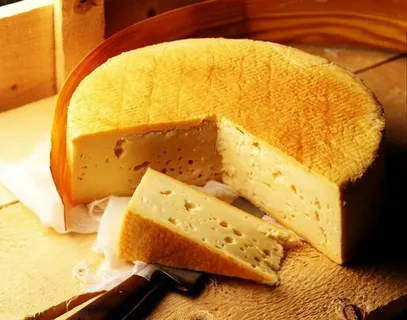
What Is a Cheese Named After an English Village?
A cheese named after an English village is a type of cheese that has been traditionally made in a specific village or region in England. These cheeses often carry the name of the village where they were first created, and they are made using methods passed down through generations. For example, Cheddar cheese is named after the village of Cheddar in Somerset, England, where it has been made for hundreds of years. These cheeses are not only famous for their unique flavors but also for their connection to the villages that produce them.
The importance of a cheese’s village name is more than just a marketing tool. It helps to preserve the traditional methods of cheese-making that have been used for centuries. In the case of Cheddar, the cheese-making process is tightly regulated by laws to ensure that only cheese made in the village of Cheddar or nearby regions can truly be called “Cheddar cheese.” This is a part of the Protected Designation of Origin (PDO) system, which protects the authenticity of many British products, ensuring they stay true to their roots.
Cheeses named after English villages can vary in texture, flavor, and appearance, reflecting the local environment and the specific methods used in their creation. For example, Wensleydale cheese, named after the Wensleydale region in North Yorkshire, is crumbly and slightly sweet, which mirrors the gentle, green hills and cool climate of the area. Each village brings its own influence to the cheese, making it a unique product of its surroundings.
Besides Cheddar and Wensleydale, other famous English village cheeses include Stilton, which is named after the village of Stilton in Cambridgeshire. Stilton cheese is a blue-veined cheese with a strong, tangy flavor that is distinct and bold. Each of these cheeses, whether it is creamy, crumbly, sharp, or blue, holds a special place in English food culture, and they are an essential part of the country’s culinary heritage.
In summary, a cheese named after an English village is more than just a food item; it is a representation of that village’s history, culture, and the pride of its people. The connection between the cheese and the place it originates from makes these cheeses special, allowing people to enjoy not only a delicious product but also a slice of English tradition.
History of Cheese Named After an English Village
The history of cheese named after an English village dates back centuries, with many of these cheeses having been made in specific regions of England for generations. One of the earliest and most famous examples is Cheddar cheese, which has its roots in the village of Cheddar in Somerset. Historical records show that cheese-making in Cheddar dates back as far as the 12th century. The village’s unique environment, with its rich grasslands and caves, helped create the perfect conditions for making cheese, and soon Cheddar became known for its distinct, flavorful cheese. Over time, Cheddar cheese spread across the country, but it still maintains its strong connection to the village where it all began.
The history of these village-named cheeses is closely linked to the development of British agriculture. For centuries, small farms in rural villages were the backbone of the economy, and many villages had their own methods of farming and food production. Cheese-making became an important skill passed down from one generation to the next. In places like Wensleydale, Yorkshire, and Stilton, Cambridgeshire, local families would make cheese using milk from their own cows, sheep, or goats. The methods and recipes used were often closely guarded secrets, passed down through families for many years.
As these village cheeses grew in popularity, they became symbols of the regions that produced them. Wensleydale cheese, for example, was first made by monks in the Yorkshire Dales in the 12th century. The recipe was later adopted by local farmers, and over time, the distinct crumbly texture and mild flavor of Wensleydale became closely associated with the Dales. Similarly, Stilton cheese, which dates back to the 18th century, was named after the village where it was first made and became a favorite at the tables of the British elite. These cheeses were often sold in local markets and slowly gained fame beyond their villages, but their ties to the village name remained strong.
By the 20th century, the importance of protecting the origins of these cheeses grew. In 1996, the European Union introduced the concept of Protected Designation of Origin (PDO) to safeguard regional foods. This meant that only cheese made in specific regions using traditional methods could carry the name of the village or region. For example, only cheese made in the village of Cheddar, using the traditional methods, could be called “Cheddar cheese.” This helped preserve the rich history of these cheeses and protected their authenticity from mass production and imitation.
The history of cheese named after an English village is a testament to the deep connection between food and place. These cheeses are not just products; they are part of the cultural heritage of England, representing the people, the land, and the traditions of the villages where they were created. Whether it’s the rich flavor of Cheddar or the smooth, creamy texture of Stilton, each cheese tells a story of centuries of craftsmanship, tradition, and local pride.
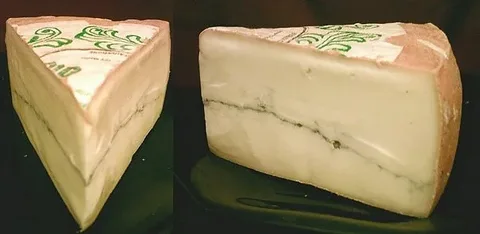
Why Are Cheeses Named After English Villages?
Cheeses are named after English villages for several reasons, but one of the main factors is the long-standing tradition of cheese-making in specific regions of England. Many of these villages have been making cheese for hundreds of years, with the knowledge and techniques being passed down through generations. By naming the cheese after the village, it helps preserve and honor the history of the cheese-making process in that area. The name often reflects the local environment, the traditions of the people, and the specific techniques used to create the cheese.
Another reason why cheeses are named after English villages is to highlight the unique characteristics of the area where the cheese is made. The soil, climate, and pastureland of a particular region can have a big impact on the flavor of the cheese. For example, Cheddar cheese, named after the village of Cheddar in Somerset, has a distinctive sharp flavor that comes from the rich grass and herbs in the region. The environment of each village influences the taste and texture of the cheese, making it unique to that place. By associating the cheese with the village, it helps to showcase the special qualities that make it different from other cheeses.
Over time, the naming of cheeses after villages also became a way to build a sense of pride and identity for the people in those areas. The villagers often took great pride in their cheese-making traditions, and the name of the cheese became a symbol of their local culture. This helped establish a reputation for quality and craftsmanship. Cheddar, Stilton, and Wensleydale are just a few examples of cheeses that have come to represent not only the villages where they were made but also the heritage and craftsmanship of the people who produced them.
The use of village names for cheese also helped protect the authenticity of these cheeses. As these cheeses became more popular, it became important to distinguish between those made using traditional methods and mass-produced versions. In the 20th century, the introduction of laws like the Protected Designation of Origin (PDO) helped ensure that only cheeses made in specific regions could carry the name of the village. This helped protect the reputation of village cheeses and ensured that they remained true to their origins, preserving the traditions that made them so special.
In summary, cheeses are named after English villages because of the deep connection between the land, the people, and the methods used to make the cheese. The village name serves as a symbol of tradition, quality, and local pride, while also helping to protect the authenticity and unique characteristics of each cheese. Whether it’s the rich history of Cheddar or the crumbly texture of Wensleydale, these cheeses are more than just food—they are a reflection of the villages they come from.
Famous Cheeses Named After English Villages
There are several famous cheeses named after English villages, each with its own unique flavor and history. One of the most well-known is Cheddar, named after the village of Cheddar in Somerset. Cheddar cheese has become one of the most popular and widely recognized cheeses in the world. It has a firm texture and a sharp, tangy flavor that varies depending on its age. Traditionally, it was made using milk from local cows, and the cheese was aged in the natural caves of Cheddar Gorge, which helped create its distinctive taste. Today, Cheddar is still made in Somerset, but it is also produced in other parts of the UK and beyond.
Another famous cheese named after an English village is Wensleydale, which originates from the Wensleydale region in North Yorkshire. This cheese has a crumbly texture and a mild, slightly sweet flavor. It has been made in the region for over a thousand years, and its roots can be traced back to the 12th century when monks in the area began making it. Over time, Wensleydale cheese became popular throughout England, especially when it was paired with fruit, such as cranberries or apricots, to create new and delicious variations. Today, Wensleydale remains a favorite cheese, enjoyed by people around the world.
Stilton is another well-known cheese named after an English village, specifically Stilton in Cambridgeshire. This blue-veined cheese has a strong, tangy flavor that is both rich and creamy. Stilton cheese has been made since the early 18th century, and it was originally produced in the village of Stilton by local farmers. Today, Stilton is made in several areas of the UK, but the name is protected by law, and only cheese made in designated regions can be called “Stilton.” This cheese is often served with crackers or paired with port wine, making it a popular choice for special occasions.
Lastly, Double Gloucester is a traditional cheese from the Gloucestershire region. It is a semi-hard cheese with a smooth, creamy texture and a mild, buttery flavor. Double Gloucester has been made in the area for centuries, and it was originally produced by local farmers who would use milk from Gloucester cattle. The cheese was traditionally made in large rounds, and its name comes from the fact that it is made from two types of milk: cow’s milk and cream. Double Gloucester is a popular cheese in the UK, often used in cooking or enjoyed on its own.
In summary, there are many famous cheeses named after English villages, each with its own unique taste and history. From the sharp Cheddar of Somerset to the crumbly Wensleydale of Yorkshire, these cheeses are not just delicious, but also a part of England’s rich cultural and culinary heritage. Each cheese reflects the traditions, the land, and the people of the village it comes from, making them special and memorable.
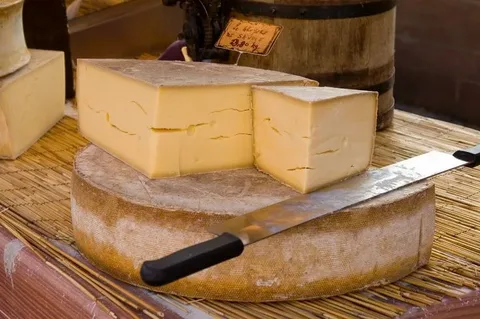
How a Cheese Gets Its Name from an English Village
A cheese gets its name from an English village mainly because of the long-standing tradition of cheese-making in that region. For many centuries, English villages have been home to local cheese-makers who use the milk from nearby farms to create their cheeses. These cheeses are often named after the village where they were first made, as a way to highlight the region’s connection to the cheese. For example, Cheddar cheese is named after the village of Cheddar in Somerset, where the cheese has been produced for hundreds of years. The village’s unique environment, including its rich grasslands and caves, played a big role in developing the distinct taste of the cheese.
The process of naming a cheese after a village also helps to protect its authenticity. When a cheese carries the name of a village, it serves as a mark of quality, showing that it is made using traditional methods that have been passed down through generations. This is especially important for cheeses like Stilton, which is made in a specific region and must follow strict guidelines to be recognized as true Stilton cheese. The name not only reflects the location where the cheese originated but also ensures that the cheese meets certain standards of production that are linked to the region’s heritage.
In many cases, the unique features of the local environment, such as the soil, climate, and pastureland, have a big impact on the flavor and texture of the cheese. For instance, the Wensleydale cheese, named after the Wensleydale region in Yorkshire, is known for its mild, crumbly texture, which is influenced by the lush green pastures of the area. The flavors and characteristics of these cheeses are tied to the land and the animals that live there, making each cheese unique to its village.
Cheeses named after English villages often reflect the pride that local communities take in their traditions. Over time, these cheeses have become symbols of the villages they come from. Locals have worked hard to preserve the techniques used to create these cheeses, and they often view the cheese as an important part of their cultural identity. By naming the cheese after the village, it helps create a connection between the food and the people who have been making it for generations.
In summary, a cheese gets its name from an English village because of the long tradition of cheese-making in that area, the connection to the land, and the pride that local people take in their cheese. The name not only helps preserve the history and authenticity of the cheese but also highlights the unique flavors and textures that come from the village’s environment. Whether it’s the tangy Cheddar or the mild Wensleydale, the name of the cheese tells a story of local tradition and craftsmanship.
The Process of Making Cheese Named After an English Village
The process of making cheese named after an English village often begins with the careful selection of milk from local farms. This milk is usually from cows, sheep, or goats that graze on the rich pastures around the village. The quality of the milk is key to producing the distinct flavor and texture of the cheese. For example, in the village of Cheddar, the milk comes from cows that graze on the lush grass of Somerset, which contributes to the unique taste of Cheddar cheese. After the milk is collected, it is pasteurized to remove any harmful bacteria, although some traditional cheeses may still be made with raw milk to preserve their authentic flavors.
Once the milk is ready, the next step in the cheese-making process is to add a starter culture and rennet. The starter culture consists of bacteria that help acidify the milk, giving the cheese its specific texture and flavor. Rennet is an enzyme that helps coagulate the milk, causing it to form curds. These curds are the solid part of the milk, while the liquid part, called whey, is separated out. The curds are then cut into smaller pieces to help release more whey. The size of the curds can affect the texture of the cheese, with larger curds resulting in a firmer cheese like Double Gloucester.
After cutting the curds, they are gently cooked and stirred. This helps the curds expel more whey and begin to firm up. The temperature and time during this process are crucial and vary depending on the type of cheese being made. For instance, the curds for Stilton cheese are treated differently to create its crumbly texture, while Wensleydale curds are handled more delicately to maintain their smoothness. The cheese-maker will also press the curds to remove excess moisture, shaping them into large wheels or blocks, which will be further processed and aged.
Aging is a vital part of making cheese named after an English village. The cheese is stored in cool, controlled environments, often in caves or cellars, where the temperature and humidity are carefully managed. In the village of Cheddar, for example, the cheese was traditionally aged in the natural caves of Cheddar Gorge, which helped develop its distinct, rich flavor. Aging allows the flavors to develop and the texture to mature. Depending on the type of cheese, aging can last anywhere from a few weeks to several months. Some cheeses, like Cheddar, are aged longer to create a sharper, more robust flavor, while others, like Wensleydale, are often sold fresh for a milder taste.
In summary, making cheese named after an English village involves a careful process that begins with high-quality milk and ends with aging the cheese to develop its flavor and texture. The methods used, including the selection of milk, curd cutting, cooking, pressing, and aging, are all influenced by the traditions of the village. These time-honored practices are what make village-named cheeses like Cheddar, Wensleydale, and Stilton so unique and beloved. Each cheese reflects the history, environment, and craftsmanship of the village it comes from.
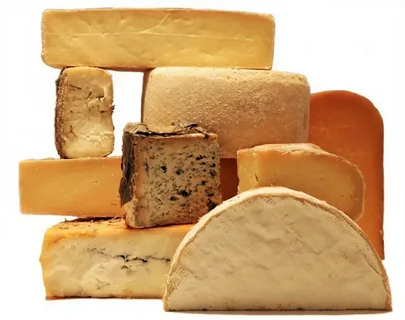
Popular English Villages Known for Their Cheeses
England is home to several villages that are famous for their cheese-making traditions. One of the most well-known is the village of Cheddar in Somerset. Cheddar is the birthplace of the famous Cheddar cheese, one of the most popular cheeses in the world. This village has been making cheese for centuries, and its rich, tangy flavor is a result of the unique environment, including the lush pastures and the natural caves in Cheddar Gorge, where the cheese was traditionally aged. The village of Cheddar has maintained its reputation as a hub for cheese-making, with many modern producers still following the age-old methods that have made this cheese so iconic.
Another famous village known for its cheese is Wensleydale, located in North Yorkshire. Wensleydale cheese has a long history that dates back to the 12th century when monks first began making it. The cheese has a crumbly texture and a mild, slightly sweet flavor, which makes it stand out from other English cheeses. Wensleydale cheese was once produced on a smaller scale, but today, it’s made in larger quantities and is enjoyed all over the world. The village of Wensleydale remains proud of its cheese-making heritage, with many local dairies continuing to produce the cheese using traditional methods passed down through generations.
Stilton is another popular cheese that gets its name from a small village in Cambridgeshire. Although the cheese is now produced in several regions, it was first made in Stilton in the early 18th century. Stilton cheese is a blue-veined cheese with a strong, creamy flavor. The village of Stilton became famous for this cheese, and its name is now synonymous with blue cheese. Stilton has a protected status, meaning only cheese produced in certain areas and made according to specific rules can bear the name “Stilton.” The village of Stilton remains an important place in the history of English cheese, and its legacy continues to shape the production of this beloved cheese.
Double Gloucester is another cheese tied to an English village, specifically the village of Gloucester. This semi-hard cheese is known for its smooth, buttery texture and mild, creamy flavor. Made from cow’s milk, Double Gloucester has been produced in the Gloucestershire region for centuries. The cheese is often associated with the famous Gloucestershire cattle, which were known for their rich, creamy milk. The village of Gloucester continues to be a key producer of this cheese, and it is a popular choice for both everyday meals and special occasions.
In conclusion, several English villages have earned their place in the cheese-making world due to their long-standing traditions and high-quality cheeses. From Cheddar in Somerset to Wensleydale in Yorkshire, and Stilton in Cambridgeshire, these villages have become famous for their unique and delicious cheeses. The process of making these cheeses, which has been passed down through generations, reflects the deep connection between the villages and the land, making each cheese special and full of history.
The Taste and Texture of Cheese Named After an English Village
Cheese named after an English village often has a distinct taste and texture that reflect the local environment and traditions of the region. Take Cheddar, for example. This famous cheese from the village of Cheddar in Somerset has a sharp, tangy flavor that becomes more pronounced the longer it ages. Fresh Cheddar is smooth and mild, but as it matures, it develops a deeper, richer taste with hints of nuttiness. The texture of Cheddar varies as well. Young Cheddar is soft and slightly crumbly, while aged Cheddar is firmer and can even develop crunchy crystals that add to its texture. This variety in flavor and texture makes Cheddar a versatile cheese enjoyed in many dishes or eaten on its own.
Another well-known cheese named after an English village is Wensleydale. Wensleydale cheese, originating from the village of Wensleydale in North Yorkshire, has a mild, creamy flavor that is often described as slightly sweet and fruity. The texture of Wensleydale is crumbly yet smooth, making it easy to break apart but also a delight to eat. This cheese often pairs well with fruit, especially in the famous combination of Wensleydale and cranberry. The taste of Wensleydale can also be influenced by its aging process, with some varieties becoming sharper and firmer over time. Overall, Wensleydale offers a delicate, balanced flavor that many find refreshing and light.
Stilton is another cheese named after an English village, and it stands out with its strong, bold flavor. This blue-veined cheese, first made in the village of Stilton in Cambridgeshire, has a creamy texture with a distinctive tanginess due to the blue mold. The taste of Stilton can range from mild to very intense, depending on its aging. Younger Stilton is smooth and slightly less pungent, while older versions become much stronger and more crumbly. The richness of Stilton’s flavor, combined with its creamy texture, makes it a popular cheese for pairing with crackers, fruits, or even in sauces. The unique taste of Stilton is what gives it its iconic status in the world of blue cheeses.
The texture and taste of Double Gloucester, a cheese from the village of Gloucester, are also notable. Double Gloucester has a smooth, firm texture that is slightly crumbly, with a rich, buttery flavor. The cheese has a mellow taste with a slight tang, making it enjoyable for many who prefer a less intense cheese. Double Gloucester is often enjoyed on its own, but it also melts well, making it an excellent choice for cooking or as part of a cheese platter. The balance of mild creaminess and firmness makes Double Gloucester a favorite in English homes and around the world.
In conclusion, the taste and texture of cheeses named after English villages vary widely, but each type carries a unique profile shaped by the traditions and environment of its region. Whether it’s the sharp, tangy Cheddar, the smooth and creamy Wensleydale, the bold and crumbly Stilton, or the rich and buttery Double Gloucester, these cheeses offer a wide range of flavors and textures. The distinct characteristics of each cheese reflect not only the methods used to make them but also the culture and history of the villages where they were first produced.

How to Enjoy Cheese Named After an English Village
Cheese named after an English village can be enjoyed in many different ways, whether you’re serving it at a gathering or savoring it on your own. One popular way to enjoy these cheeses is by creating a cheese board. A selection of cheeses like Cheddar, Wensleydale, Stilton, and Double Gloucester can be paired with fruits, nuts, and crackers for a delicious spread. The different flavors and textures of the cheeses will complement each other, creating a delightful experience for your taste buds. Don’t forget to add a few sweet elements, like apple slices or grapes, to balance the savory notes of the cheeses.
For a more casual way to enjoy a cheese named after an English village, consider adding it to your favorite sandwiches or wraps. Cheddar cheese, with its bold, sharp flavor, is perfect for melting on a grilled cheese sandwich. It adds a rich, creamy texture that pairs wonderfully with bread, making it a comforting and satisfying meal. Wensleydale also works well in sandwiches, especially when paired with fruit chutney, which enhances its mild, slightly sweet flavor. For a unique twist, you can try Stilton in a sandwich with fresh vegetables, or even crumbled over a salad for an added punch of flavor.
Another excellent way to enjoy these cheeses is by incorporating them into your cooking. Stilton can be used to make a creamy sauce for pasta or steak, adding a rich, tangy flavor that transforms any dish into a luxurious experience. Double Gloucester is perfect for melting, making it a great addition to macaroni and cheese, or as a topping for a baked potato. Wensleydale can be crumbled into salads or stirred into risotto for a creamy, slightly crumbly texture. The versatility of these cheeses allows you to experiment in the kitchen and create flavorful meals.
For a more traditional approach, you can simply enjoy cheese named after an English village with a good glass of wine. Many English cheeses pair wonderfully with different types of wine. A Cheddar pairs nicely with a bold red wine like Cabernet Sauvignon, while Wensleydale complements a light white wine, such as Chardonnay. Stilton, with its blue veins, is often paired with a sweet dessert wine like Port, which balances its strong, pungent flavor. Whether you prefer red, white, or even sparkling wine, there’s a perfect pairing for each type of village cheese.
In conclusion, enjoying cheese named after an English village is all about exploring different combinations and finding what works best for your taste. Whether you enjoy it on a cheese board, in a sandwich, cooked into a dish, or paired with wine, these cheeses bring a touch of English tradition to any meal. Their unique flavors and textures make them a delightful addition to any occasion, so don’t hesitate to get creative and enjoy them in different ways.
Cheese Named After an English Village: A Connection to Culture
Cheese named after an English village is more than just a food; it represents a deep connection to the culture, history, and traditions of the region. The names of these cheeses are tied to the villages where they originated, each with its unique story and heritage. For example, Cheddar cheese, named after the village of Cheddar in Somerset, has been made for centuries and is deeply connected to the area’s farming practices. The rich, grassy pastures of Somerset, combined with local methods of cheese-making, have helped shape the distinctive sharp flavor of Cheddar. When you enjoy a piece of Cheddar, you’re tasting the history and culture of the land where it all began.
In the same way, Wensleydale, a cheese from the village of Wensleydale in North Yorkshire, carries the essence of its surrounding landscape. The cheese has been made since the 12th century by monks who settled in the region. The cool climate and fertile pastures of the Yorkshire Dales are reflected in the mild, creamy texture and slightly sweet taste of Wensleydale. This cheese also represents the agricultural practices of the area, where local farmers have continued the traditions of cheese-making passed down over generations. The connection between Wensleydale cheese and the village of Wensleydale is a living tradition that continues to shape the culture of the region today.
The creation of Stilton cheese in the village of Stilton in Cambridgeshire is another example of how cheese can be a reflection of its cultural origins. Although Stilton is now made in different regions, its name still carries the village’s identity. The strong, blue-veined flavor of Stilton cheese is tied to the methods developed by the village’s early cheese-makers. Stilton has become a symbol of the English countryside, and its rich, tangy taste reflects the craft and expertise that has been passed down through the centuries. The cultural significance of Stilton goes beyond its taste, as it is often enjoyed during special celebrations, including Christmas, symbolizing the connection between food and English traditions.
The process of making Double Gloucester in the village of Gloucester also highlights the cultural importance of village-based cheese-making. Double Gloucester has been made in the Gloucestershire region for hundreds of years, and it reflects the agricultural practices of the area, where Gloucester cattle are known for producing rich, creamy milk. The cheese’s mild, buttery flavor and smooth texture are a direct result of the local farming methods. In many ways, Double Gloucester represents the deep bond between the people of the village and the land they have worked for generations. The tradition of making cheese in Gloucester is part of the cultural fabric of the region, bringing together the community and its agricultural heritage.
In conclusion, cheese named after an English village is not just a food product; it is a cultural symbol that carries the history, traditions, and landscapes of the villages where it originated. Each cheese tells a unique story, from Cheddar in Somerset to Wensleydale in Yorkshire, Stilton in Cambridgeshire, and Double Gloucester in Gloucestershire. These cheeses are a reflection of the connection between the land, the people, and the craft of cheese-making that has been passed down through generations. Enjoying these cheeses is like tasting a piece of history, culture, and tradition in every bite.
Pairing Cheese Named After an English Village with Foods
Cheese named after an English village can be an exciting addition to any meal, especially when paired with the right foods. The unique flavors and textures of these cheeses, like Cheddar, Wensleydale, and Stilton, can complement various dishes, making them even more enjoyable. Cheddar, with its sharp, tangy flavor, pairs wonderfully with hearty foods like roasted meats or even in a classic Cheddar cheese sandwich with ham or turkey. The richness of the cheese enhances the savory flavors of the meat, creating a delicious contrast. For a simpler snack, serve Cheddar with apples or pears. The sweetness of the fruit balances out the cheese’s tanginess, making a perfect match for a light lunch or appetizer.
Wensleydale, known for its mild and creamy texture, is another cheese that pairs well with a variety of foods. This cheese is often enjoyed with fruits like cranberries, apples, or grapes, as the sweetness of the fruit complements Wensleydale’s smooth, slightly sweet taste. Wensleydale and cranberry is a classic pairing that is perfect for festive occasions or as a part of a cheese board. For a more savory option, try serving Wensleydale with a salad of mixed greens, nuts, and a light vinaigrette. The creamy texture of the cheese adds richness to the freshness of the salad, making it a well-rounded dish.
When it comes to Stilton, the bold, blue-veined cheese can be a bit more challenging to pair due to its strong flavor. However, Stilton is a favorite for pairing with sweet wine like Port or Sherry. The sweetness of these wines helps balance the strong, tangy taste of Stilton, making it a delightful treat during dinner parties or special events. Stilton also pairs beautifully with figs or walnuts. The natural sweetness of figs or the earthy crunch of walnuts complements the richness of the cheese, making it a sophisticated and tasty snack or appetizer.
For a more casual pairing, Double Gloucester, with its creamy, mild flavor, works well with crusty bread or biscuits. The buttery texture of Double Gloucester melts easily and can be spread on warm bread, making it a perfect addition to a light meal. For a simple yet delicious pairing, try Double Gloucester with tomatoes or roasted vegetables. The mild, buttery flavor of the cheese enhances the sweetness of the tomatoes and the savory notes of the vegetables, creating a balanced dish that can be served as a side or main course.
In conclusion, pairing cheese named after an English village with the right foods can elevate your meal and bring out the best in both the cheese and the dish. From the tangy richness of Cheddar with apples and meats to the creamy sweetness of Wensleydale with fruits and salads, the options are endless. Stilton, with its bold flavor, pairs beautifully with sweet wines and nuts, while Double Gloucester works well with bread and roasted vegetables. These cheeses bring a touch of English tradition to your table, and with the right pairings, they can make any meal more enjoyable.

Why Cheese Named After an English Village Is Special
Cheese named after an English village is special for many reasons, with its unique flavors, long history, and connection to the land where it’s made. Each cheese tells a story about the region it comes from, carrying with it the traditions and agricultural practices that have been passed down through generations. The name of the cheese often reflects its origin, making it more than just a product—it’s a piece of the village’s history and culture. For example, Cheddar, which originates from the village of Cheddar in Somerset, is renowned worldwide for its bold, tangy flavor. The cheese’s long history, dating back centuries, connects it to the rolling hills and rich pastures of Somerset, where the local climate and soil contribute to the quality of the milk used in its production.
The craftsmanship involved in making these cheeses is another reason why cheeses named after English villages are so special. The people who make Wensleydale, Stilton, and Double Gloucester follow traditional methods that have been passed down for generations. These cheeses are often made by hand, using local milk from cows, sheep, or goats that graze on the land surrounding the village. The process is time-consuming and requires skill and patience, which results in cheeses with complex flavors and textures. For example, Wensleydale cheese, with its crumbly, creamy texture and slightly sweet taste, reflects the careful craftsmanship that has been perfected over centuries in the village of Wensleydale, Yorkshire.
Cheese named after an English village is also special because of its close relationship with the local community. In many villages, the production of these cheeses supports local farmers and small businesses. The process of making cheese is often a community effort, with local farmers providing the milk and small dairies processing it into cheese. This creates a sense of pride in the village, as the cheese becomes a symbol of local identity. Stilton, for example, is not only famous for its rich, blue-veined taste but also for the tradition of working together within the community to produce it. The villagers take great pride in continuing this tradition, which is why Stilton is so cherished and regarded as a symbol of English culture.
The unique flavors and textures of these cheeses also make them special. Each cheese reflects the climate, environment, and farming practices of its village. Cheddar, for instance, has a sharp and firm texture that is a result of the rich grasslands in Somerset, while Double Gloucester has a buttery, smooth flavor due to the rich milk produced by Gloucester cattle. Stilton, with its distinct blue veins, offers a tangy and creamy taste, a product of the molds used in its fermentation process. The differences in flavor and texture among these cheeses show how closely they are tied to the land where they are made, making each bite a true representation of its village’s environment.
In conclusion, cheese named after an English village is special because of its deep connection to history, tradition, and the local community. These cheeses tell the story of the region where they come from, offering a taste of local heritage that has been preserved for centuries. Whether it’s the craftsmanship behind Cheddar, the community effort in Stilton, or the unique flavors of Wensleydale and Double Gloucester, these cheeses provide a delicious way to experience the culture of England’s villages.
conclusion
To wrap it up, cheese named after an English village is truly special because it tells the story of the place where it’s made. Each cheese has its own flavor and texture, which comes from the land and the people who make it. Cheeses like Cheddar and Wensleydale are not just tasty—they also carry history with every bite. When you eat them, you’re getting a taste of the village and its traditions.
So, next time you try a cheese named after an English village, remember that you’re enjoying more than just food. You’re also enjoying a piece of England’s past and the hard work of the people who make these cheeses. It’s a fun and delicious way to learn about a different place and its history!
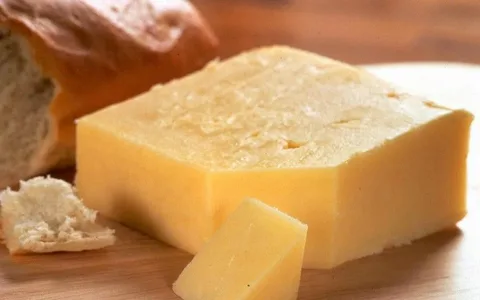













Post Comment